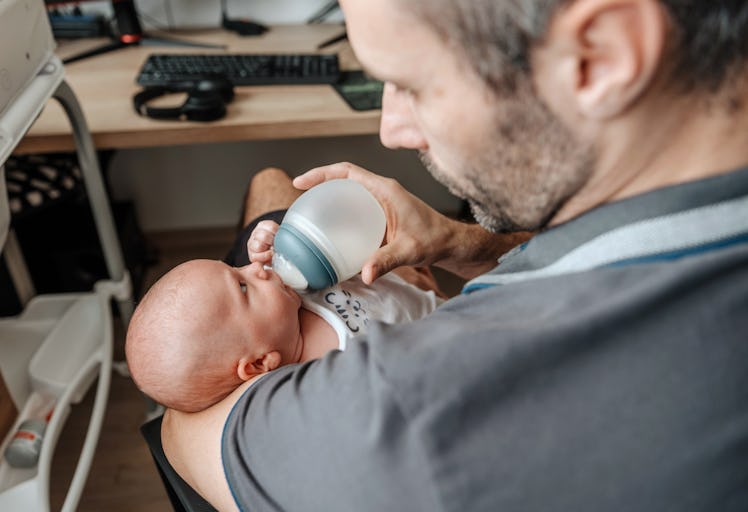How To Know When Your Baby Is Full
Measuring a baby’s fullness by how content they are, rather than how empty the bottle is, helps babies get the right amount of food every day.

Whether they’re bottle-feeding or breastfeeding, parents alternate between addressing baby’s hunger and being alert to signs baby is full. Just as there are usually clear signs that a baby is hungry, there are clear signals that help a parent learn how to know when a newborn is full: They’ll turn their heads away from the breast or bottle, spit the extra food out, or fall asleep. But there are a few circumstances in which parents can miss the mark of knowing when baby is full.
“Sometimes parents will make the bottle’s nipple hole wider, so they can feed the baby faster, which can overwhelm babies and make them briefly full,” says Linda Palmer, a Doctor of Chiropractic and author of the book Baby Poop. This temporary fullness leaves babies hungry shortly after.
As a rule, Palmer says, parents should feed their babies regular amounts of milk or formula once every two hours. Less could leave them hungry, while more could lead to overfeeding. But she says most babies self-regulate quite efficiently.
“Feed ‘on-demand’ normally works best,” Palmer says. “Typically, babies will let you know if they are hungry.”
Not all foods encourage babies to regulate their own feeding, however. Sweetened foods can indeed override a full belly, Palmer says, and they’re best avoided until mealtime routines are properly established.
“Babies don’t need additional sugar in their foods,” Palmer says. “But some parents might be concerned that their baby needs more food, so they’ll give them some pudding or something like that.” Unless a physician has said the baby is underweight and they require more food and calories as part of a prescribed diet to get them to maintain a healthy weight, treats and sweetened food can be avoided altogether, Palmer says.
When your baby is feeding on-demand, it’s still important to observe how much your kid is eating. If they are spitting, getting gassy, or showing other signs that they are full but still going back for seconds or thirds at the breast, bottle, or jar, then that signifies they might need help taking a break. “That is a sign to slow things down, or distract them, do something else, and come back to feeding later,” Palmer says.
Signs A Baby Is Full
- Follow the kid’s lead. Feed on-demand, and make sure that very young babies are eating at least once every couple of hours — but only when they need to.
- Stop feeding when baby seems full. Look for obvious signs that the baby is full, such as falling asleep, turning their head away, or starting to spit the food out.
- Measure fullness with satiety, not completed bottles or jars. While using a single vessel to define the right quantity of food is convenient, a baby’s reaction to the food is much more telling.
- Avoid sugary foods that can lead to overfeeding. Babies don’t need extra sugar in their food, and the deliciousness of it can encourage them to eat more food than they need to be comfortably full.
This article was originally published on